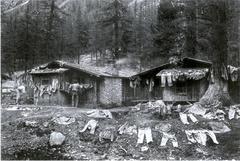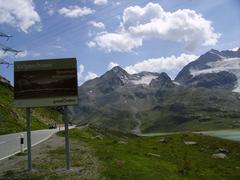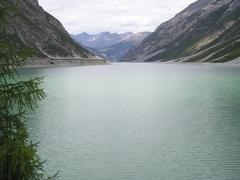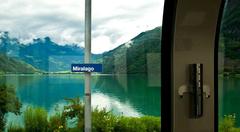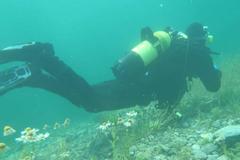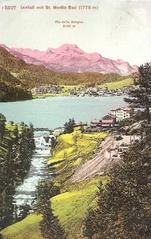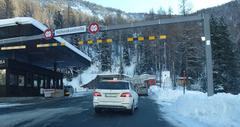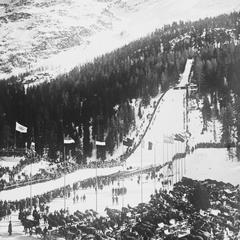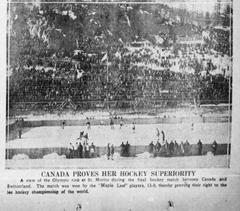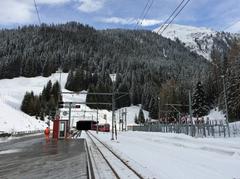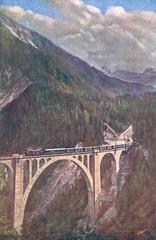
Canaschal Castle: Visiting Hours, Tickets, and Historical Significance in Canton of the Grisons, Switzerland
Date: 04/07/2025
Introduction
Nestled in the picturesque Domleschg valley of Switzerland’s Canton of the Grisons (Graubünden), Canaschal Castle (also known as Burg Canaschal or Hohentrins Castle) stands as a captivating relic of the region’s medieval heritage. Overlooking the village of Trin, the castle’s evocative ruins offer visitors a window into centuries of Alpine history, from early settlements by the Raetians and Roman influence, through the feudal era, to the cultural mosaic of today’s tri-lingual canton. This guide details the castle’s history, practical visitor information—including hours, tickets, and accessibility—nearby attractions, and tips for making the most of your visit.
Historical Overview
Early Settlement and Regional Context
The Grisons region boasts one of Switzerland’s deepest historical roots, with human habitation dating back to the Neolithic era. Archaeological finds in Chur, the cantonal capital, trace settlement as far back as the Pfyn culture (3900–3500 BCE), marking it as one of the country’s oldest cities (bein-numismatics.ch). The Raetians, followed by Roman expansion in 15 BCE, established the area as a critical trade and military corridor across the Alps, setting the stage for the proliferation of castles like Canaschal.
Medieval Power Structures and the Three Leagues
Following the collapse of Roman authority, the region was dominated by ecclesiastical and feudal powers, with the Diocese of Chur wielding significant influence (bein-numismatics.ch). The rise of the Three Leagues (Gotteshausbund, Grauer Bund, and Zehngerichtebund) between the 14th and 15th centuries fostered local autonomy and resistance to Habsburg encroachment, culminating in alliances with the Swiss Confederacy (bein-numismatics.ch).
Strategic Role of Castles
Castles like Canaschal were pivotal for defense, administration, and control of vital Alpine passes. Built primarily between the 12th and 14th centuries, these fortifications feature robust stone walls, watchtowers, and elevated positions for surveillance (mindfulpnwtravels.com).
Religious and Political Upheaval
The Bündner Wirren (Confusion of the Leagues, 1618–1639) saw violent conflict between Protestant and Catholic factions, with castles serving as focal points for control and resistance. The turmoil of this era is epitomized by the assassination of Pompeius Planta at nearby Rietberg Castle (bein-numismatics.ch).
Integration into Modern Switzerland
The Napoleonic reordering of Switzerland in 1798, and the subsequent creation of the Canton of the Grisons in 1803, transformed castles like Canaschal from military strongholds to heritage sites (bein-numismatics.ch).
Architectural and Cultural Significance
Canaschal Castle exemplifies the defensive architecture typical of the Grisons region, with thick stone walls and a strategic hilltop location. The site consists of two towers, separated by approximately 150 meters:
- Western Tower: Better preserved, measuring about 7.6 by 8.2 meters, with walls up to 2.2 meters thick. Notable for its high entrance, once accessible by ladder, and a carved stone depicting a crowned king—possibly Pepin the Short (military-history.fandom.com).
- Eastern Tower: Now largely ruined, originally about 10 by 10 meters, likely a lookout or secondary defensive structure.
The ruins are a testament to the region’s multicultural heritage, with interpretive signage in German, Romansh, and Italian, reflecting the Grisons’ linguistic diversity (raetischesmuseum.app).
Visiting Canaschal Castle
Location and Directions
Canaschal Castle is situated about 3 kilometers southeast of Trin village. The most popular access is via well-marked hiking trails from Trin, offering panoramic views of the Rhine Valley and Alps. The hike typically takes 45 minutes to an hour.
- By Public Transport: Take a train to Chur, then a local bus to Trin. From Trin, follow the trail signs to the castle.
- By Car: Parking is available in Trin; from there, continue on foot.
Visiting Hours and Tickets
- Hours: Open year-round as an open-air ruin, with unrestricted access during daylight (recommended between 9:00 AM and 6:00 PM for safety and visibility).
- Admission: Free of charge; no tickets required.
- Guided Tours: Occasionally offered by local tour operators or heritage groups, primarily in summer. Advance booking is advisable.
Accessibility
The castle ruins are accessed via hiking trails and are not wheelchair accessible. The terrain is uneven and may be challenging for those with limited mobility. There are no on-site facilities or visitor centers; visitors should be prepared with sturdy footwear and necessary supplies.
Enhancing Your Visit
Nearby Attractions
- Rietberg Castle: Site of historic events during the Bündner Wirren.
- Chur Old Town: Switzerland’s oldest city, with museums, shops, and restaurants.
- Castle Trail: A local hiking route connecting several medieval castles in the Domleschg valley.
- Rhine Gorge (“Swiss Grand Canyon”): A spectacular natural attraction nearby.
Activities
- Photography: The castle’s elevated position provides excellent opportunities, especially at sunrise or sunset.
- Cultural Festivals: The region hosts medieval markets and Romansh cultural events; check local listings for dates.
- Local Cuisine: Regional specialties such as Capuns and Bündnerfleisch are available in Trin and neighboring villages.
Frequently Asked Questions
Q: What are Canaschal Castle’s visiting hours?
A: The ruins are open year-round during daylight hours; visits are recommended between 9:00 AM and 6:00 PM.
Q: Is there an entry fee?
A: No, the site is freely accessible to all visitors.
Q: Are guided tours available?
A: Not regularly, but summer tours may be arranged through local tourism offices; booking in advance is recommended.
Q: Is the site suitable for families and children?
A: Yes, but children should be supervised due to uneven terrain and lack of safety barriers.
Q: Is Canaschal Castle wheelchair accessible?
A: No, the hiking trail and ruins are not accessible to wheelchairs.
Visitor Tips
- Visit during late spring to early autumn for optimal weather.
- Wear sturdy shoes and bring water, as there are no on-site facilities.
- Respect the site’s historic character by not disturbing the ruins.
- For up-to-date information, consult the Graubünden Tourism website or Trin municipal site.
Digital Tools and Resources
Enhance your visit with the Audiala Mobile App, offering audio guides, interactive maps, and additional insights for Swiss historical sites including Canaschal Castle. For related articles, hiking recommendations, and travel inspiration, browse official tourism sites and follow local social media channels.
Visual Content Suggestions
- High-resolution photos of the western tower ruins with alt text: “Canaschal Castle western tower ruins in Graubünden.”
- Map showing the castle’s location relative to Trin.
- Hiking trail maps and suggested routes from Trin to Canaschal Castle.
- Video or virtual tour links (where available).
Conclusion
Canaschal Castle is an evocative destination where history and nature intertwine. Its open-access ruins, stunning Alpine backdrops, and proximity to other Grisons attractions make it a rewarding stop for history enthusiasts, hikers, and cultural travelers alike. Whether you’re tracing the region’s medieval past or simply enjoying a scenic walk, Canaschal Castle invites you to discover the enduring spirit of Graubünden.
Sources
- Graubünden Grisons, 2025, Bein Numismatics
- Castles in Switzerland, 2024, Mindful PNW Travels
- Canaschal Castle, 2024, Military History Wiki
- Graubünden – Land of Castles, 2024, Rätisches Museum App
- Historic Buildings in the Canton of Grisons, 2024, Schreiber Schreibt
- Grisons – Switzerland’s Largest Eastern Canton, 2024, Together in Switzerland
- Switzerland Medieval Castles, 2024, Mesinfos
- Trin and Graubünden Attractions, 2024, Travalour
- Official Graubünden Tourism Website, 2025
- Trin Municipality Site, 2025
- Audiala Mobile App, 2025


